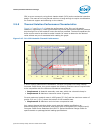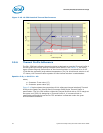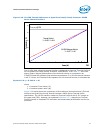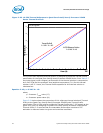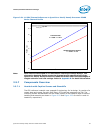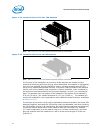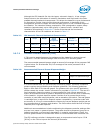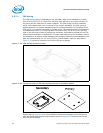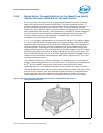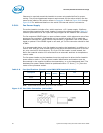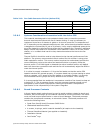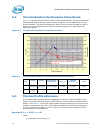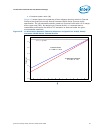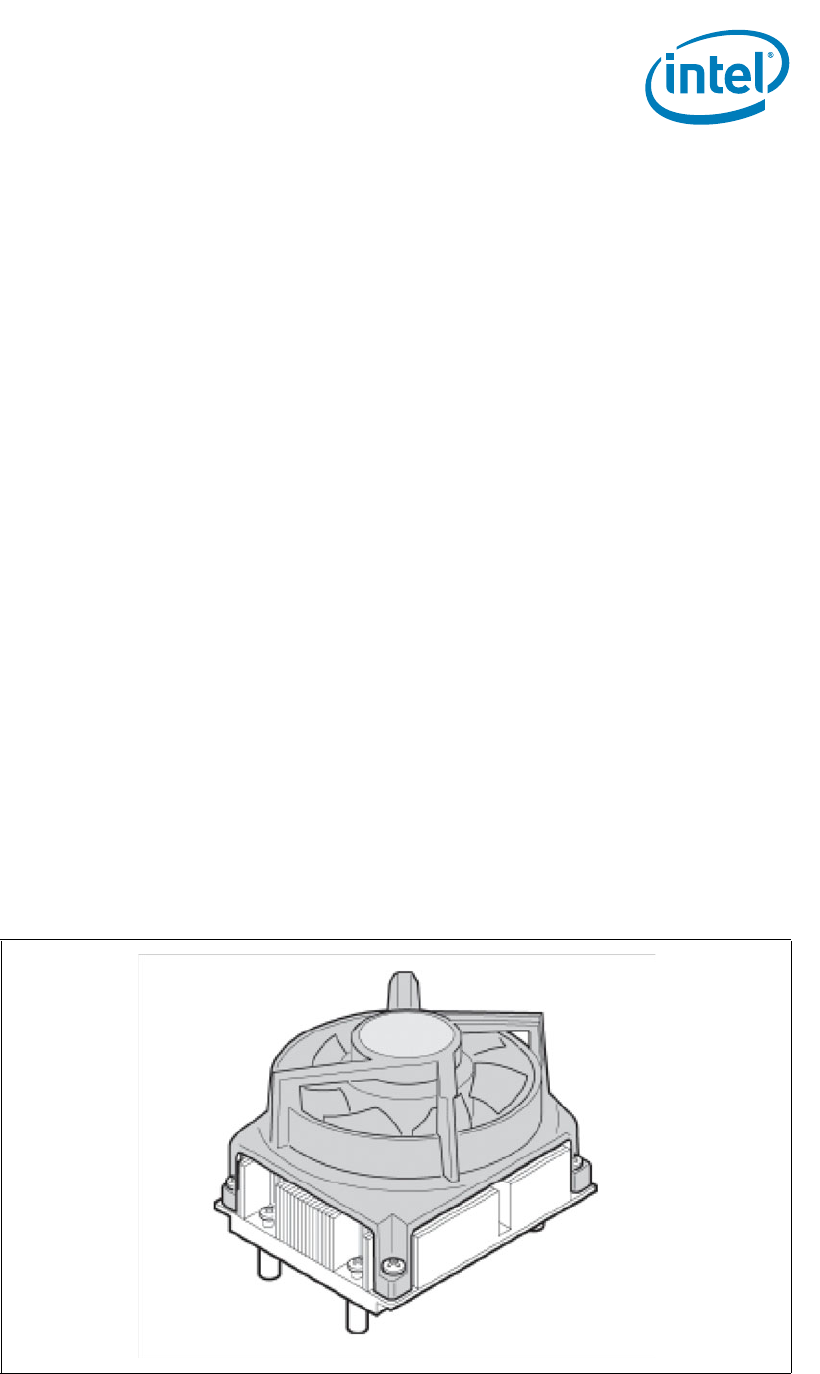
Quad-Core Intel® Xeon® Processor 5400 Series TMDG 49
Thermal/Mechanical Reference Design
2.5.8 Boxed Active Thermal Solution for the Quad-Core Intel®
Xeon® Processor 5400 Series Thermal Profile
Intel will provide a 2U passive and a 1U passive/active heatsink solution for boxed
Quad-Core Intel® Xeon® Processor 5400 Series. This active heatsink solution is
primarily designed to be used in a pedestal chassis where sufficient air inlet space is
present and side directional airflow is not an issue. This active heatsink solution
consists of a 4 wire PWM fan and a 1U passive heatsink compatible with 1U form factors
both mechanically and thermally. These solutions are intended for system integrators
who build systems from components available through distribution channels. The
retention solution used for these products is called the CEK. The CEK base is
compatible with all the heatsink solutions.
Figure 2-26 provides a representation of the active CEK solution. This design is based
on a 4-pin PWM PECI/DTS controlled active fan heatsink solution. PWM (Pulse Width
Modulation also synonymous with Pulse Duration Modulation PDM) is a modulation in
which the duration of pulse is varied in accordance with some characteristic of the
modulating signal. This solution is being offered to help provide better control over
pedestal chassis acoustics. This is achieved though accurate measurement of processor
temperature through the processor’s Digital Thermal Sensor (DTS) temperature. Fan
RPM is modulated through the use of an ASIC (Application Specific Integrated Circuit)
located on the serverboard, that sends out a PWM control signal to the 4
th
pin of the
connector labeled as Control.
This heatsink solution also requires a constant +12 V supplied to pin 2 and does not
support variable voltage control or 3-pin PWM control. If no PWM signal is detected on
the 4
th
pin this heatsink solution will revert back to thermistor control mode,
supporting both the 4-wire PWM and standard 3-wire ambient air control methods.
The active heatsink solution will not exceed a mass of approximately 1050 grams. Note
that this is per processor, so a dual processor system will have up to approximately
2100 grams total mass in the heatsinks. This large mass will require a minimum
chassis stiffness to be met in order to withstand force during shock and vibration.
Figure 2-26. Boxed Active CEK Heatsink Solutions with PWM/DTS Control
(Representation Only)



